My Man Godfrey

Brief Synopsis
Cast & Crew
Gregory La Cava
William Powell
Carole Lombard
Alice Brady
Gail Patrick
Jean Dixon
Film Details
Technical Specs

Synopsis
When New York socialites Cornelia and Irene Bullock both go to the city dump to obtain a "forgotten man" for a scavenger hunt being conducted at the Waldorf-Ritz Hotel, they encounter down-and-out Godfrey Parke. Insulted by Cornelia's presumptuous offer of five dollars, the well-spoken Godfrey pushes her into an ashpile. He is charmed by her sister Irene, however, and agrees to be turned in as a "find." Irene wins the contest, but Godfrey is disgusted by the careless attitude of the wealthy crowd and deems it a pleasure to return to the dump. Smitten by Godfrey, however, Irene hires him as the family butler, despite the fact that Cornelia vows to make his life miserable. Their scatterbrained mother Angelica supports a resident protégé named Carlos, a fop who does gorilla imitations and eats everything in sight. Irene takes after her mother, and her father Alexander worries about his family's extravagance. When Irene falls in love with Godfrey and kisses him, he admonishes her, and she sulks. During a tea party thrown by Irene, one of the guests, Tommy Gray, recognizes Godfrey as an old college chum. In order to keep his past a secret, Tommy claims Godfrey was his valet and is married with five children. Irene is horrified by this revelation and, out of spite, suddenly announces her engagement to Charlie Van Rumple, a young heir whom she had rebuffed only a few moments before. Tommy and Godfrey meet privately for lunch, and Godfrey's background is revealed to be old Bostonian wealth. He tells Tommy he became a derelict by his own choosing after a bitter disappointment in love. Later Cornelia tries to set Godfrey up by planting her pearls under his bed and calling the police, but a search reveals nothing, and Alexander, suspicious of his daughter's motives, encourages the police to drop the matter. When Irene's engagement is broken, she and Cornelia go on a lengthy trip to Europe. Godfrey, meanwhile, re-visits the dump with Tommy, where he hits on a scheme to turn the forgotten men into working men. When Irene returns from Europe, she still longs for Godfrey and assumes a melodramatic depression. After a beleaguered Alexander announces he is broke, Godfrey surprises everyone by resigning and revealing that he had taken the pearls from his bed and used them as collateral for stocks he played on the market in Alexander's name, thereby saving the family fortune. He returns the pearls to Cornelia, who apologizes for treating him shabbily. Having learned something from each member of the family, Godfrey bids them farewell and returns to the city dump, which he has transformed into a nightclub that employs his fellow derelicts. Irene follows him and determinedly sets up housekeeping. Tommy, who is aware of Irene's intentions, sends the mayor into Godfrey's office in the nightclub, and much to the surprise of a dumbfounded Godfrey, he and Irene are married.

Director

Gregory La Cava
Cast

William Powell

Carole Lombard

Alice Brady

Gail Patrick

Jean Dixon
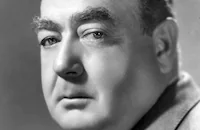
Eugene Pallette
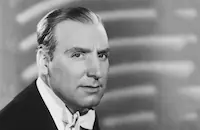
Alan Mowbray

Mischa Auer
Pat Flaherty
Robert Light
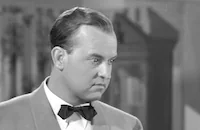
Grady Sutton
Selmer Jackson
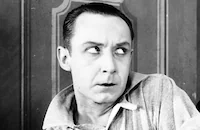
Franklin Pangborn
Edward Gargan

James Flavin
Robert Perry

Grace Fields
Katherine Perry
Harley Wood
David Horsley
Philip Merrick
Ernie Adams
Phyllis Crane
Jack Chefe
Eddie Fetherston
Arthur Singley
Reginald Mason

Eddie Kane
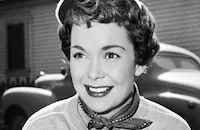
Jane Wyman
Arthur Wanzer
Crew
Zoë Akins
Maude Allen
Travis Banton
Scott R. Beal
Brymer
Chic Collins
Dolores Conrad
Doc Dearborn
Loretta Francell
Fred Frank
John P. Fulton
Charles D. Hall
Eric Hatch
Ted Kent
Gregory La Cava
Joseph Lapis
Dixie Martin
Grace Moody
A. W. Newington
Maurice Pivar
Robert Presnell
Charles Previn
Charles R. Rogers
Hugh Roman
Morrie Ryskind
Russell Schoengarth
Nate Slott
Homer G. Tasker
Ted Tetzlaff

Photo Collections
Videos
Movie Clip




Trailer
Hosted Intro




Film Details
Technical Specs

Award Nominations
Best Actor
Best Actress
Best Director
Best Supporting Actor
Best Supporting Actress
Best Writing, Screenplay
Articles
My Man Godfrey (1936)
The director of My Man Godfrey - Gregory La Cava - may not be as well known today as some of his contemporaries like Howard Hawks, George Cukor or Preston Sturges, but, like them, he found his own course to freedom within the studio system. A former animator who began directing two-reel comedies in the company of Leo McCarey and Frank Capra, La Cava freelanced for much of his career, holding studio bosses in contempt and preferring to find a more organic style of working, one that mirrored that of the screenwriter of My Man Godfrey, Morrie Ryskind.
The Pulitzer Prize-winning co-author of the play Of Thee I Sing (1932), with George S. Kaufman, and a screenwriter in his own right (A Night at the Opera, 1935), Ryskind was hired to write the script for My Man Godfrey. His usual method for preparing a screenplay was rather unorthodox - he usually work-shopped his scripts with an informal team of colleagues. In this case, he rewrote and improvised dialog, often on the set, with the film's two leads and the director. La Cava also preferred this method of working, and was known for reshaping scenes and rewriting on the set, often shooting without a finished script. This spontaneous approach influenced the role of Irene, which was actually based on Carole Lombard.
La Cava had other eccentricities. When the director and star William Powell found themselves in a disagreement about the portrayal of Godfrey, the two spent an evening with a bottle of Scotch, reaching consensus hours later on the character's depiction. Arriving on the set the next morning with a headache, but intending to get a day's work done, La Cava discovered that Powell was nowhere to be found. A telegram was delivered to the set from the absent actor. It read, "WE MAY HAVE FOUND GODFREY LAST NIGHT BUT WE LOST POWELL. SEE YOU TOMORROW."
My Man Godfrey became a runaway hit, earning huge profits and six Oscar nominations, although it surprisingly didn't win in any category. Nevertheless, it confirmed William Powell's status as a leading man (He followed this with Libeled Lady [1936] starring Myrna Loy and Jean Harlow) and La Cava subsequently made the popular backstage comedy Stage Door (1937). In the part of the dizzy heiress, Carole Lombard (she was originally suggested for the role by her ex-husband Powell) finally revealed her full potential as a comedienne and actress. She also won a Best Actress nomination for her performance. In addition, My Man Godfrey garnered nominations for Best Actor (Powell), Best Supporting Actor (Mischa Auer), Best Supporting Actress (Alice Brady), Best Director and Best Screenplay. In 1957, Universal-International remade My Man Godfrey with June Allyson and David Niven in the lead roles but it was a pale imitation of the original film.
Producer: Gregory La Cava, Charles R. Rogers
Director: Gregory La Cava
Screenplay: Gregory La Cava, Eric Hatch, Morrie Ryskind
Cinematography: Ted Tetzlaff
Costume Design: Travis Banton
Film Editing: Ted Kent, Russell Schoengarth
Original Music: Charles Previn
Principal Cast: William Powell (Godfrey), Carole Lombard (Irene), Alice Brady (Angelica), Gail Patrick (Cornelia), Jean Dixon (Molly), Eugene Pallette (Alexander), Mischa Auer (Carlo), Alan Mowbray (Tommy Gray).
BW-94m.Closed captioning.
by Genevieve McGillicuddy

My Man Godfrey (1936)
Quotes
Either Carlo has to or I am.- Mr. Bullock
Am what?- Mrs. Bullock
I don't know, but one of us has to.- Mr. Bullock
Take a look at the dizzy old gal with the goat.- Blake
I've had to look at her for 20 years -- that's MRS. Bullock!- Bullock
I'm terribly sorry!- Blake
How do you think I feel?!- Bullock
Do you think you could follow an intelligent conversation for a minute?- Godfrey
I'll try.- Irene
You have a wonderful sense of humor. I wish I had a sense of humor, but I can never think of the right thing to say until everybody's gone home.- Irene
All you need to start an asylum is an empty room and the right kind of people.- Alexander Bullock
Trivia
This was the first film to ever receive four acting nominations at the Academy Awards, and it did so in the year that the supporting categories were introduced.
A stand-in was used when William Powell carries Carole Lombard over his shoulder up the stairs to her bedroom.
When "My Man Godfrey" was adapted and broadcast as an episode of the Lux Radio Theater on May 9, 1938, 'Niven, David' portrayed Tommy Gray. Niven would later star as Godfrey in the 1957 remake.
This is the only movie to ever get Oscar nominations for writing, directing and all four acting awards without being nominated for Best Picture. It's also the only movie to ever get those six nominations and lose them all.
Notes
A news item in Hollywood Reporter notes that this film was banned in Hungary. According to a news item in Hollywood Reporter, My Man Godfrey was "the sensation of the week's business of the first run London theatres. The heavy throng congregating daily for the picture has been causing traffic jams in Leicester Square." My Man Godfrey was nominated for the 1936 Academy Awards in the following categories: Best Actor, William Powell; Best Actress, Carole Lombard; Best Supporting Actor, Mischa Auer; Best Supporting Actress, Alice Brady; Best Direction, Gregory La Cava; Best Screenplay, Eric Hatch and Morrie Ryskind. Modern sources note that La Cava agreed to work with Constance Bennett, the studio's first choice for "Irene," only if William Powell was borrowed from M-G-M for the male lead. Powell, however, stipulated in his contract that he would play "Godfrey" only if Carole Lombard played "Irene." At this time, Powell and Lombard were already divorced. Modern sources also note that Ronald Colman, among other actors, expressed interest in playing "Godfrey." In 1985, Allan Carr created a Broadway stage production of My Man Godfrey.

Miscellaneous Notes
Released in United States 1936
Selected in 1999 for inclusion in the Library of Congress' National Film Registry.
Released in United States 1936














